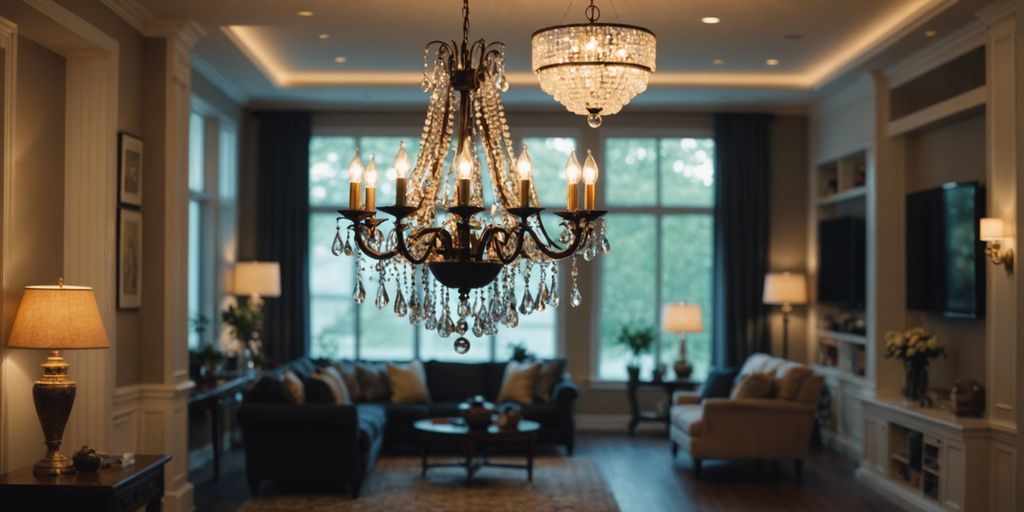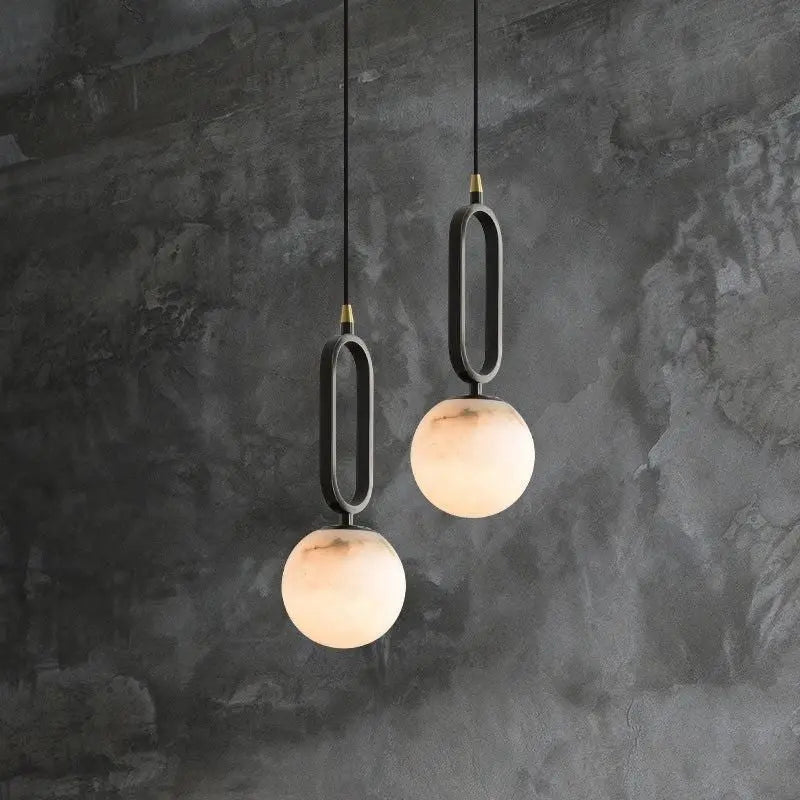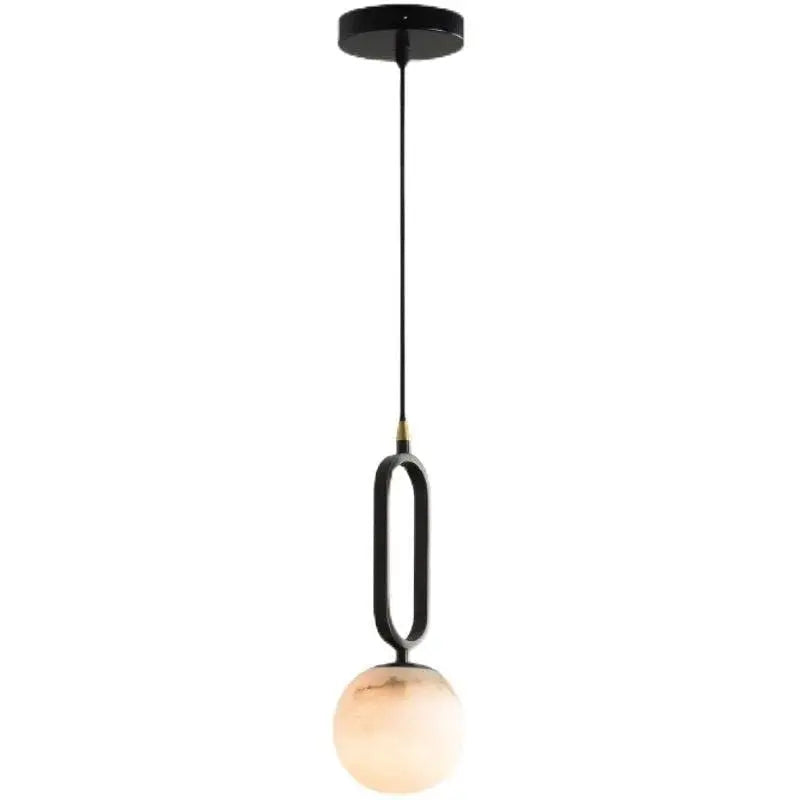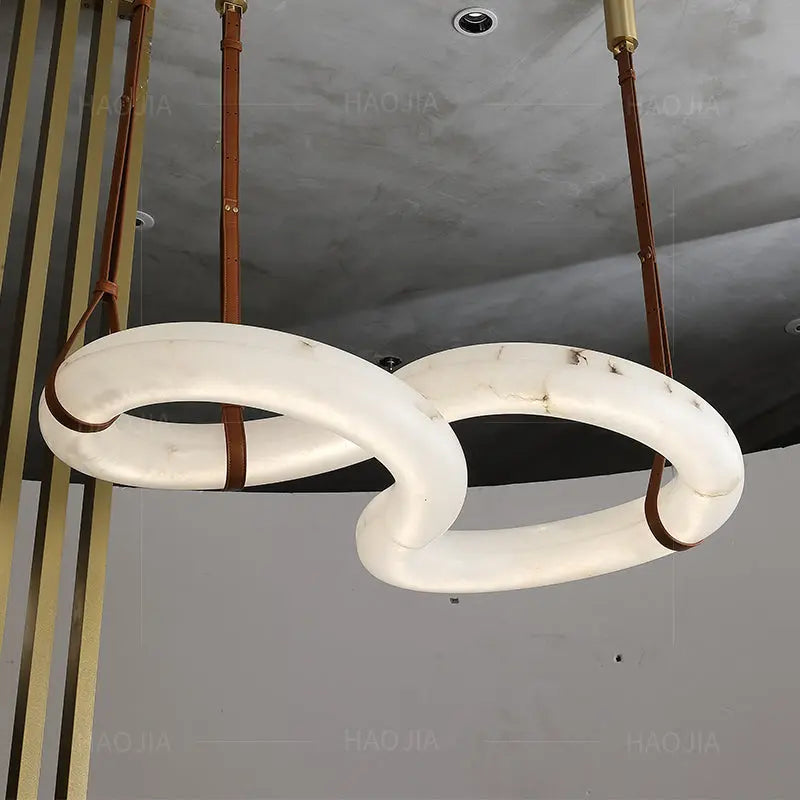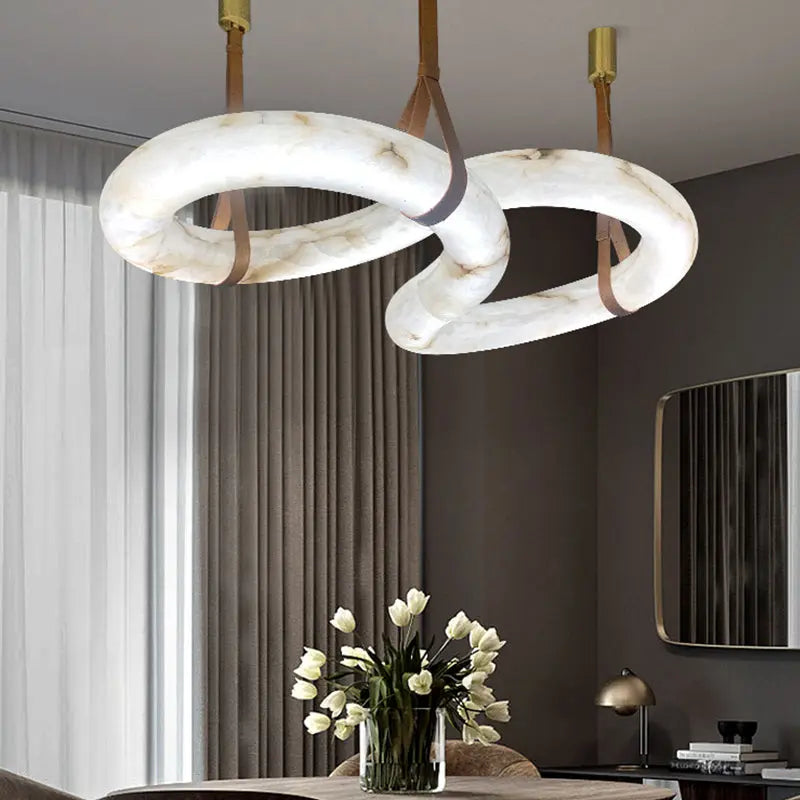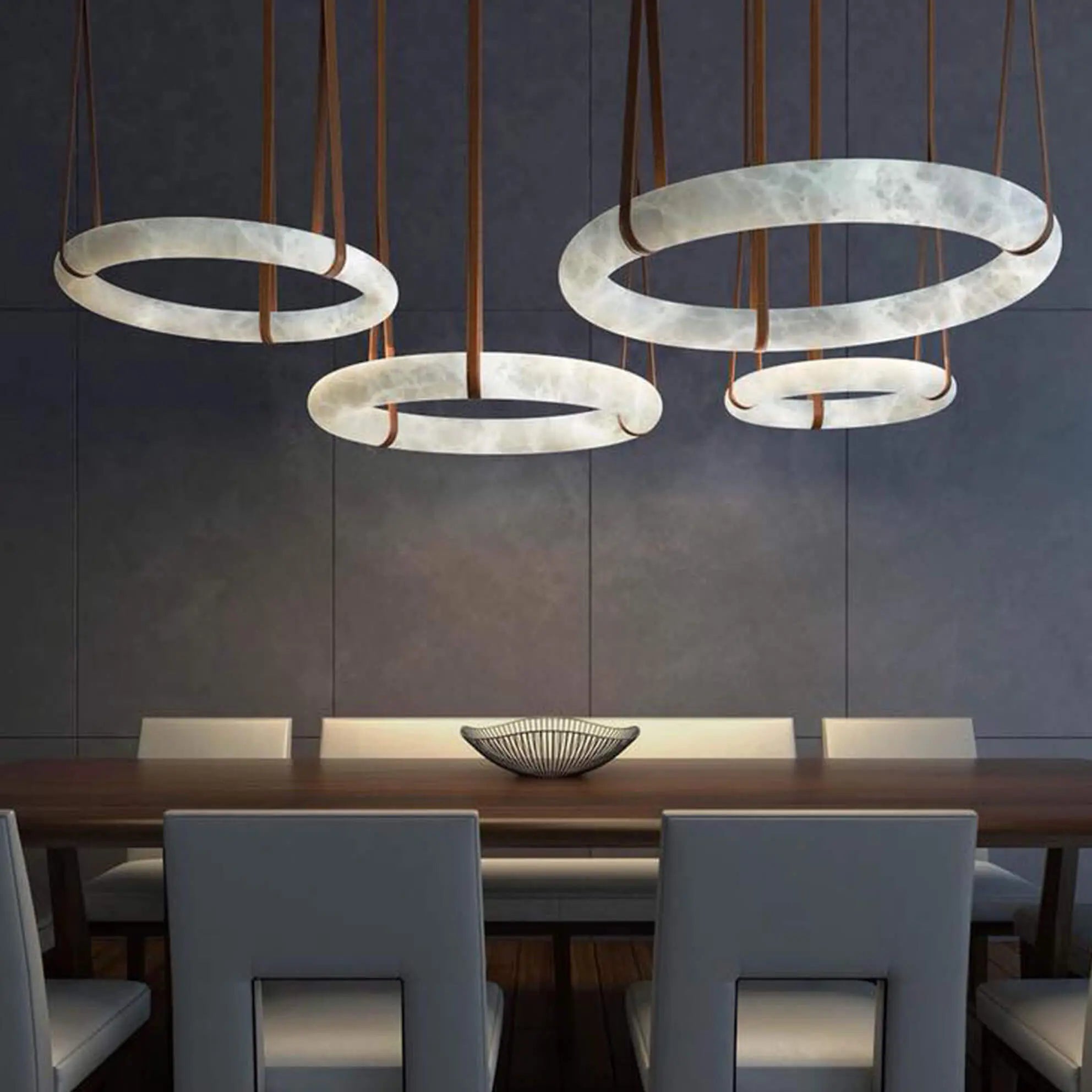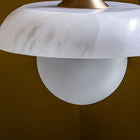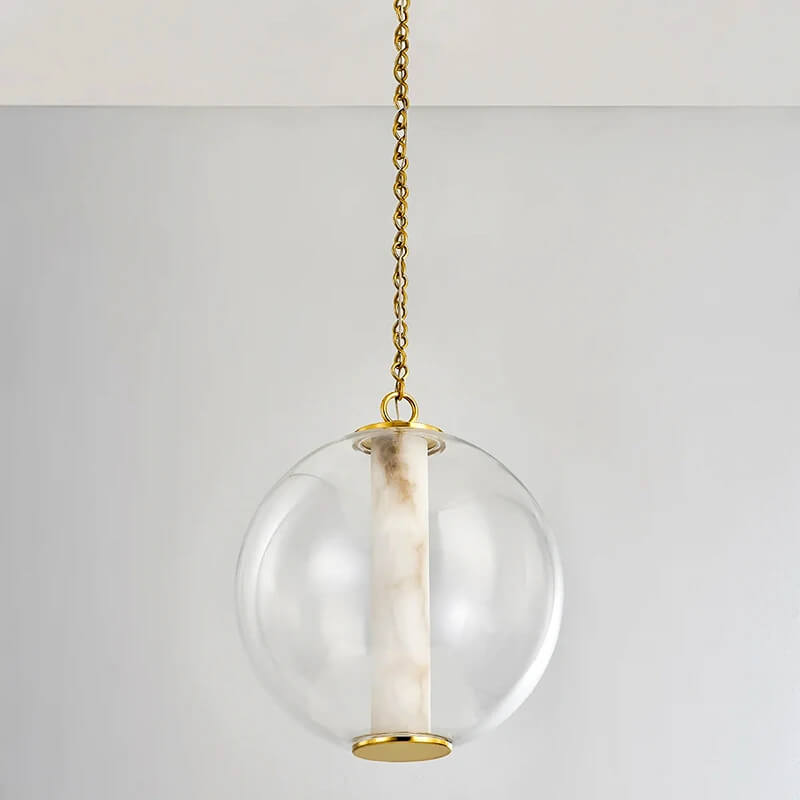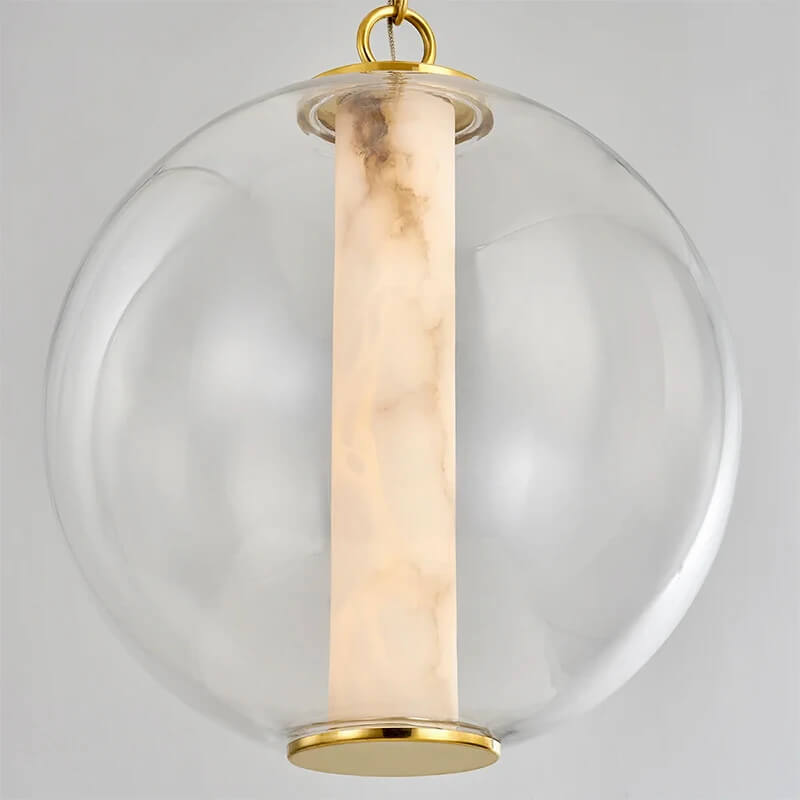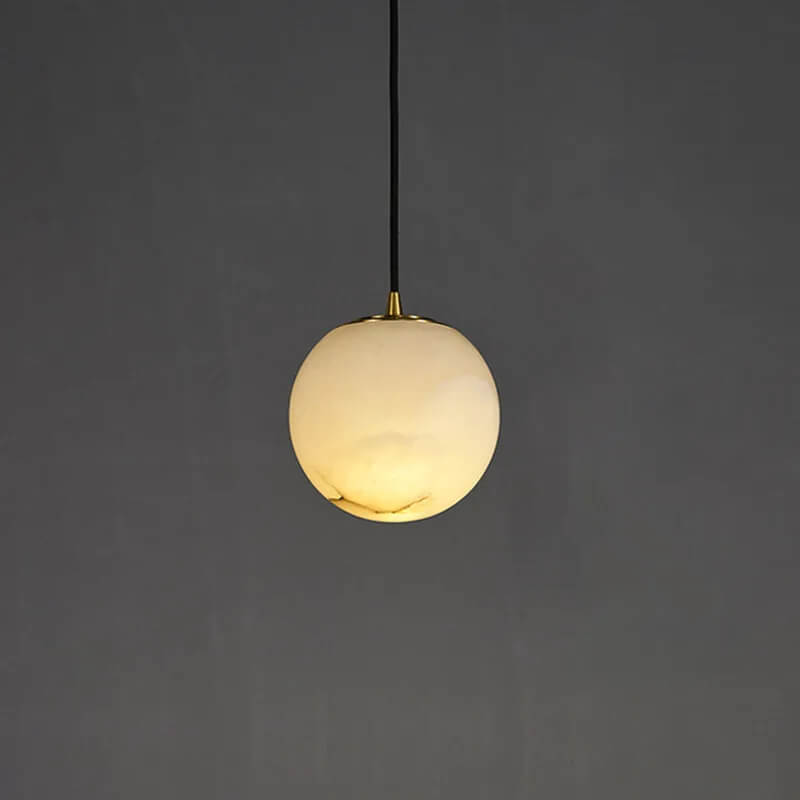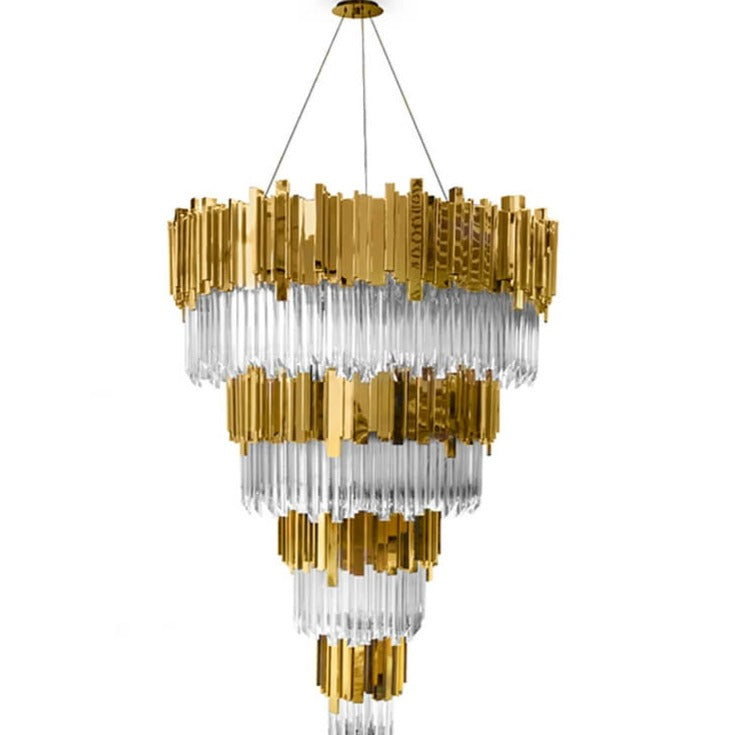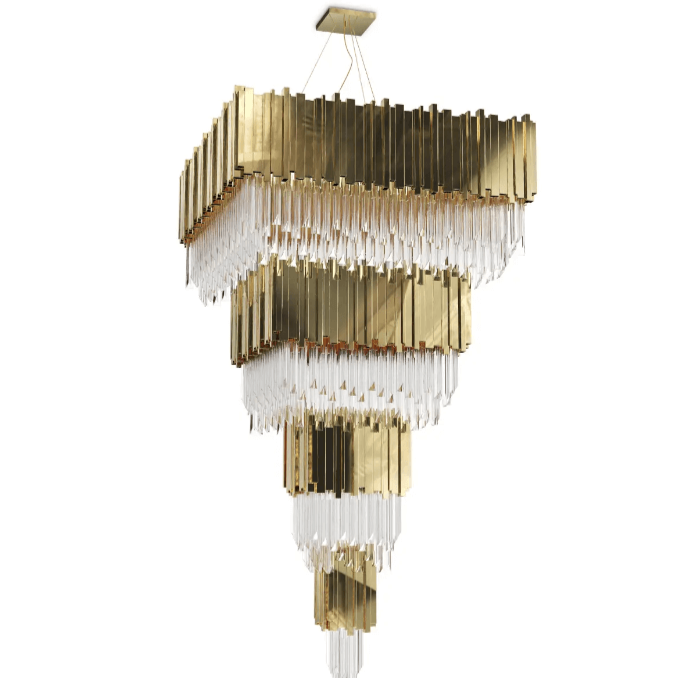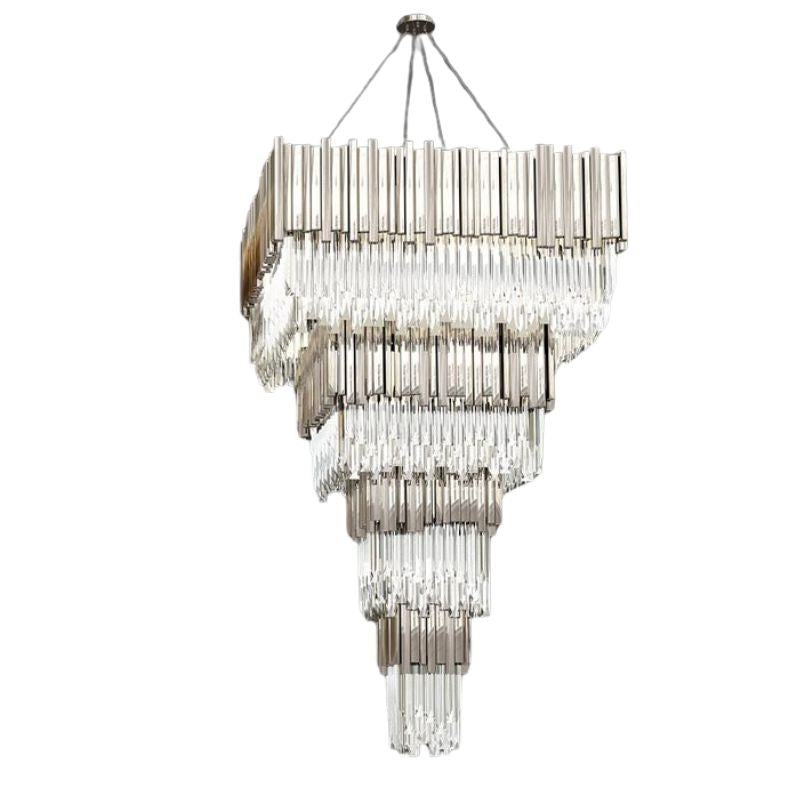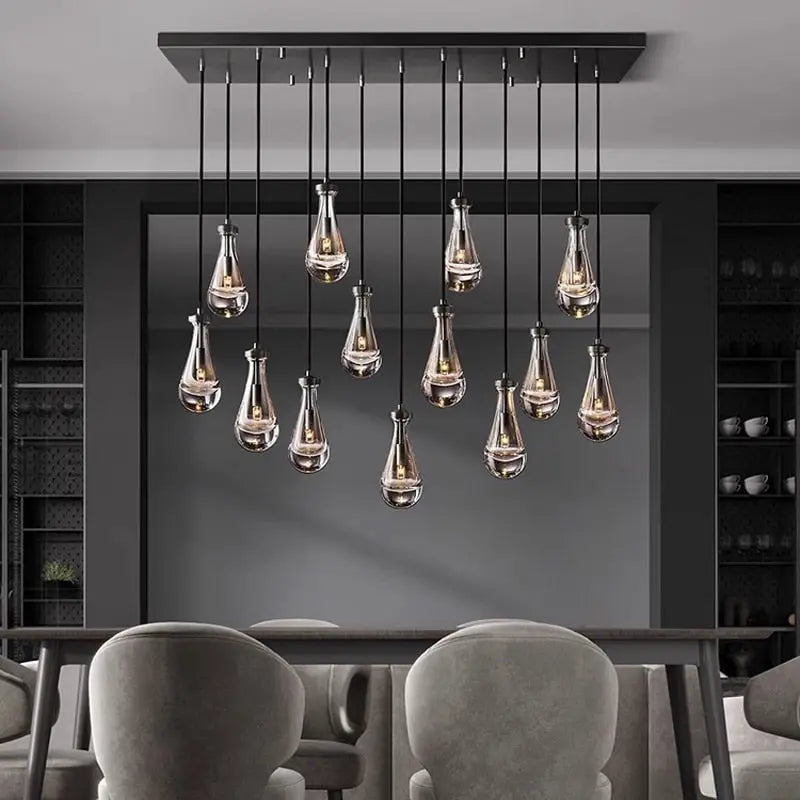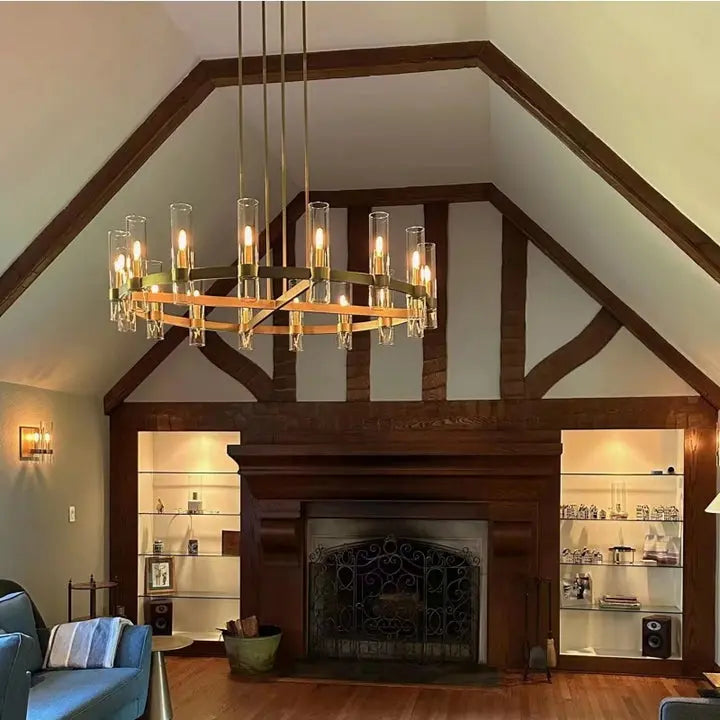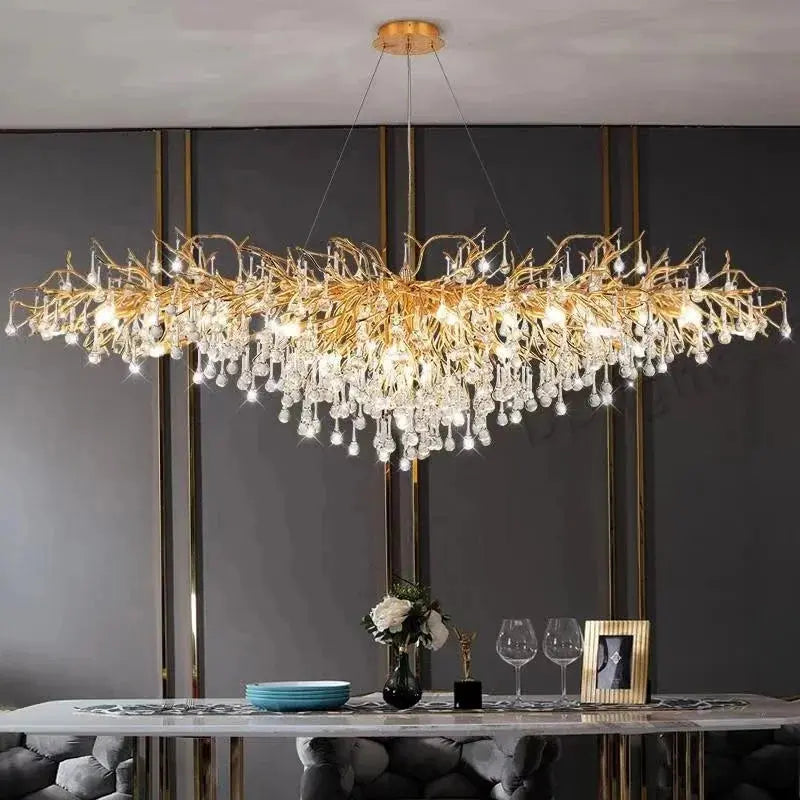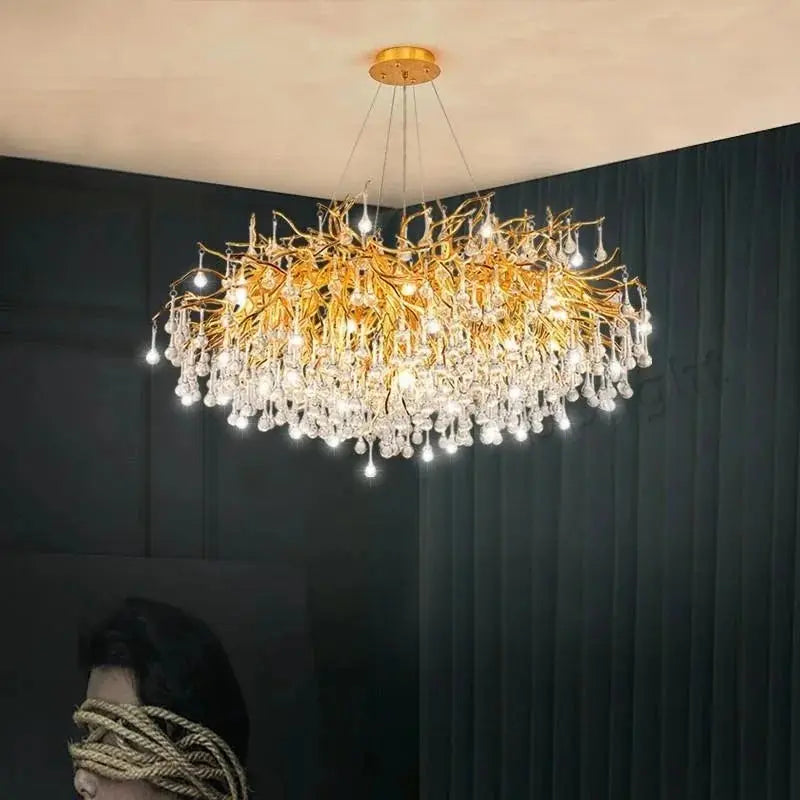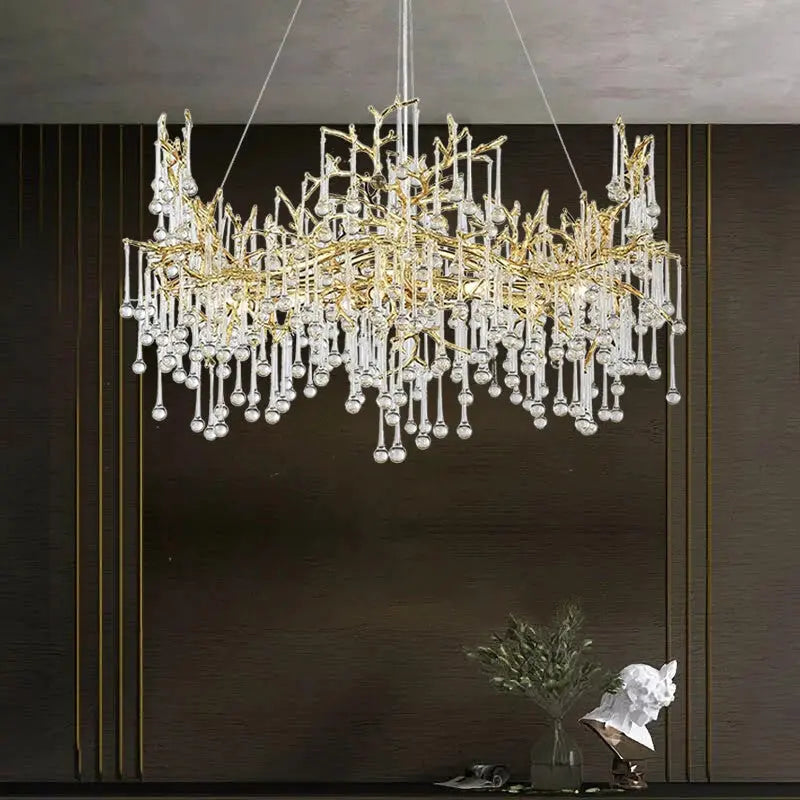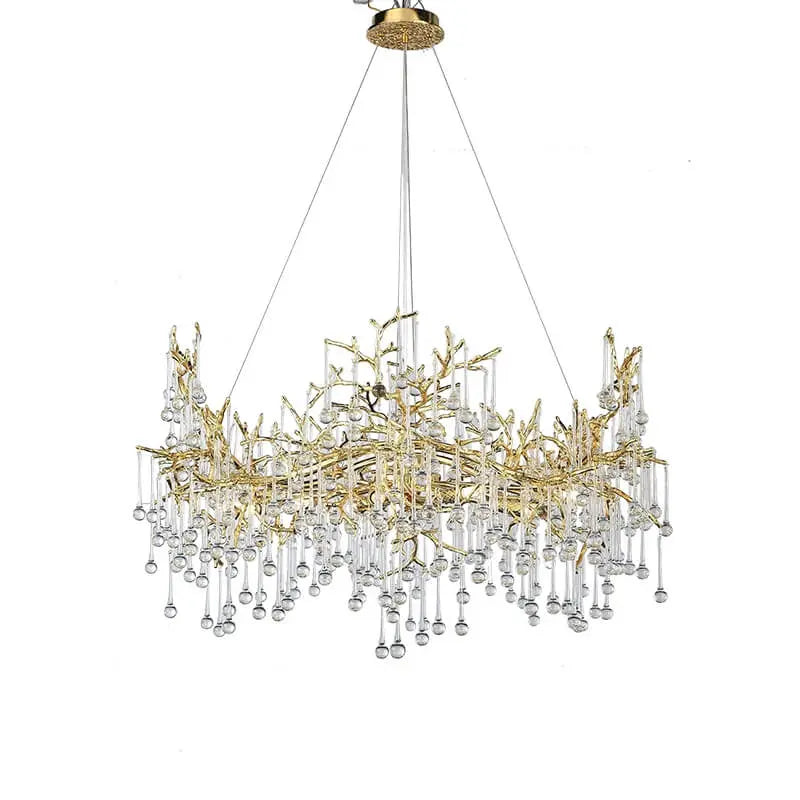Choosing the perfect chandelier for an open floor plan can be a fun yet challenging task. Open floor plans are popular for their spacious feel and flexibility. They often combine areas like the living room, dining room, and kitchen into one large space. A well-chosen chandelier can tie these areas together, providing both light and style. In this article, we will guide you through the process of selecting the right chandelier for your open floor plan.
Key Takeaways
- Understand the role of a chandelier in enhancing the look and feel of an open floor plan.
- Measure your space accurately to choose a chandelier that is the right size and height.
- Coordinate the chandelier style with your existing furniture and architectural features.
- Place the chandelier strategically to highlight key areas and maintain good sightlines.
- Consider professional installation for safety and optimal placement.
Understanding the Role of a Chandelier in an Open Floor Plan
Defining Open Floor Plans
Open floor plans usually divide spaces based on their use by placing furniture, like a sitting area or a breakfast nook, within a larger room. This layout allows for a more flexible and spacious environment. In such settings, lighting fixtures, especially chandeliers, play a crucial role in defining and enhancing these spaces.
Importance of Lighting in Open Spaces
Lighting in open spaces is essential for creating a warm and inviting atmosphere. It helps in distinguishing different areas within the same room, making each space functional and aesthetically pleasing. A well-lit space can transform an open floor plan from feeling drafty and cold to cozy and welcoming.
Chandelier as a Focal Point
A chandelier can serve as a stunning focal point in an open floor plan. Centering a chandelier over a key area, like a coffee table in the living room, can draw attention and add a touch of elegance. Alternatively, some designers prefer independent placement to highlight architectural features, such as a large window, making the chandelier the star of the room.
When choosing a chandelier, consider how it will interact with the different zones in your open floor plan. This thoughtful placement can enhance the overall design and functionality of your space.
Choosing the Right Size for Your Chandelier
Measuring the Space
To find the right size chandelier, start by measuring your room. Add the length and width of the room in feet, then convert that number to inches. This gives you a good starting point for the chandelier's diameter. For example, a room that's 10 feet by 12 feet would need a chandelier that's about 22 inches wide.
Proportionality and Balance
Ensuring the chandelier is proportional to the room is crucial. A chandelier that's too small will get lost, while one that's too big will dominate the space. Consider the visual weight of the chandelier too. A heavy-looking fixture can be a bit smaller, while a lighter one can be a bit larger to maintain balance.
Height Considerations
When hanging a chandelier, height matters. In rooms with standard 8-foot ceilings, the bottom of the chandelier should be about 7 feet from the floor. For taller ceilings, add 3 inches for each additional foot of ceiling height. This ensures the chandelier is at a comfortable height and doesn't obstruct views or movement.
Remember, the ultimate chandelier buying guide: illuminate your space with style. Tips on chandelier sizes, installation, materials, and styles. Ensure proper placement for functionality and style.
Coordinating Chandelier Styles with Your Decor
Matching with Furniture
When choosing a chandelier, it's important to think about how it will look with your furniture. A chandelier can either blend in or stand out. If your room has a lot of bold pieces, a simple chandelier might work best. On the other hand, if your furniture is more understated, you might want a chandelier that makes a statement.
Complementing Architectural Features
Consider the architectural features of your space. For example, if you have high ceilings or exposed beams, you might want a chandelier that highlights these elements. A chandelier can also draw attention to other features, like a fireplace or a large window.
Balancing Multiple Light Sources
In an open floor plan, you might have several light sources. It's important to make sure they all work together. This means thinking about the style, size, and placement of each light. A chandelier can be a great way to tie everything together and create a cohesive look.
When coordinating chandelier styles with your decor, remember that the right choice can transform your space. It's not just about lighting; it's about creating a mood and enhancing the overall design.
For more tips, check out our guide on choosing the perfect chandelier for every room. Tips include measuring room size, proportional guidelines, placement, matching decor, and understanding chandelier styles.
Optimal Placement of Chandeliers in Open Floor Plans
Centering Over Key Areas
In an open floor plan, centering a chandelier over key areas like a living room or dining space can create a striking focal point. For instance, placing a chandelier over a coffee table in the living room or above the dining table ensures it draws attention and provides ample light. This method works especially well if the chandelier is the primary source of light in the room.
Independent Placement Strategies
Some designers prefer independent placement to highlight architectural features or to make the chandelier itself the star. For example, if there's a large window, centering the chandelier in the window can create a stunning visual effect from both inside and outside. This approach allows for more creativity and can make the chandelier a unique statement piece.
Considering Sightlines and Views
When placing chandeliers, it's important to consider sightlines and views. Ensure the chandelier doesn't obstruct views across the open space or block natural light from windows. Proper placement can enhance the room's flow and make the space feel more open and inviting.
Remember, the goal is to balance functionality with aesthetics. The right placement can transform your open floor plan into a cohesive and beautifully lit space.
Practical Examples of Chandelier Placement
Living Room Setups
In a living room, a chandelier can serve as a stunning focal point. Position it centrally to draw attention and create a balanced look. If your living room has multiple seating areas, consider using more than one chandelier to define each space. This approach not only enhances the room's aesthetics but also provides ample lighting for different activities.
Dining Area Ideas
When placing a chandelier in the dining area, it's crucial to hang it at the right height. For standard 8 to 9-foot ceilings, the bottom of the chandelier should be 30 to 33 inches above the table surface. For every additional foot of ceiling height, add about 3 inches to this measurement. This ensures the chandelier is neither too high nor too low, creating a perfect ambiance for dining.
Kitchen and Breakfast Nook Lighting
In the kitchen, don't hesitate to use multiple chandeliers. This is especially effective in larger kitchens where different areas serve different purposes. For instance, you can place one chandelier over the island and another over the breakfast nook. This not only provides focused lighting but also adds a touch of elegance to the space.
Remember, the alabaster chandeliers website offers a variety of chandelier products. Explore traditional, modern, and crystal designs to find the perfect fit for your home. Limited time offers available. Illuminate your space with elegance.
Tips for Installing Chandeliers in Open Floor Plans
Electrical Considerations
Before installing a chandelier, ensure your electrical system can handle the new fixture. Check the wattage and make sure it matches your circuit's capacity. If you're unsure, consult an electrician to avoid overloading your system.
Safety Precautions
Safety should always come first. Make sure the chandelier is securely fastened to a ceiling joist or a sturdy mounting bracket. Use a ladder that is stable and have someone assist you if possible. Always turn off the power at the breaker box before starting any electrical work.
Professional Installation vs. DIY
Deciding between professional installation and a DIY approach depends on your comfort level with electrical work. If you're not confident, it's best to hire a professional. They can ensure the chandelier is installed correctly and safely. However, if you choose to do it yourself, follow a detailed guide on choosing the right chandelier size and style for different rooms. This will help you emphasize placement, proportions, and safety considerations.
Transform your space with the perfect chandelier by focusing on proper installation techniques. This ensures not only beauty but also safety and functionality.
Installing chandeliers in open floor plans can be a fun project. Start by picking a spot that will light up the whole room. Make sure the ceiling can hold the weight of the chandelier. Need more tips? Visit our website for detailed guides and a wide range of chandeliers to choose from.
Conclusion
Choosing the right chandelier for an open floor plan can transform your space, making it feel warm and inviting. Remember to consider the different areas within your open layout and how each light fixture will work together. Whether you opt for a statement piece over the dining table or multiple pendants over the kitchen island, the key is to balance style with function. Take your time to find the perfect chandelier that complements your decor and enhances the overall ambiance of your home. With the right lighting, your open floor plan will shine beautifully.
Frequently Asked Questions
What size chandelier should I choose for my open floor plan?
To find the right size chandelier, measure the length and width of the room in feet. Add those numbers together to get the ideal diameter in inches for your chandelier. For example, a room that is 12 feet by 10 feet would need a chandelier about 22 inches in diameter.
How high should I hang my chandelier?
The bottom of the chandelier should be at least 7 feet above the floor in rooms with standard 8-foot ceilings. For taller ceilings, you can hang the chandelier a bit higher.
Can I mix different styles of chandeliers in an open floor plan?
Yes, you can mix different styles of chandeliers, but make sure they complement each other and the overall decor of the space. This creates a cohesive look while adding visual interest.
Is it necessary to center the chandelier over a specific piece of furniture?
While centering a chandelier over a key piece of furniture like a dining table or coffee table is common, it's not a strict rule. You can also place chandeliers independently to highlight architectural features or create focal points.
Should I hire a professional to install my chandelier?
If you're not experienced with electrical work, it's best to hire a professional to install your chandelier. This ensures safety and proper installation.
What type of lighting works best with chandeliers in an open floor plan?
Combining chandeliers with other types of lighting like recessed lights, pendant lights, and floor lamps can create a balanced and well-lit space. This layered approach helps to define different areas within the open floor plan.

